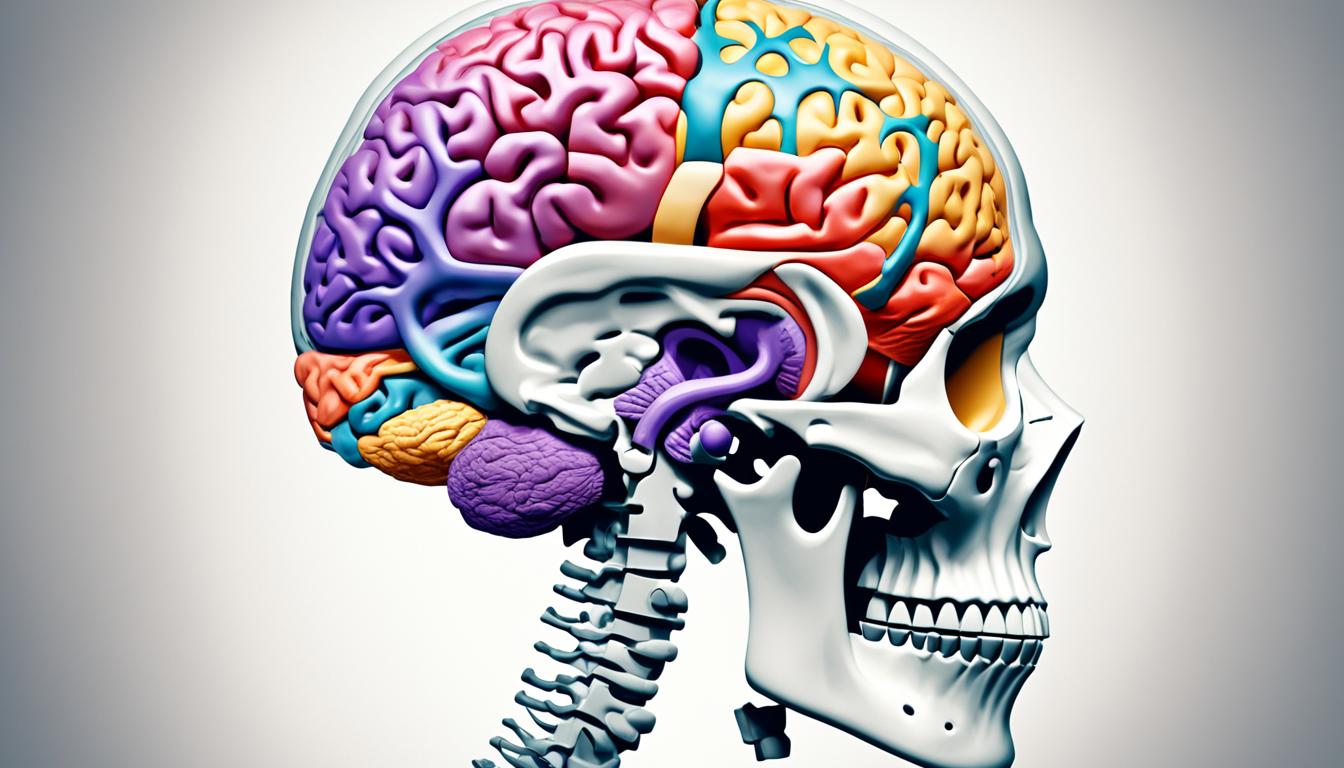Chiari malformation is a birth condition that changes the brain and spinal cord. It was named after Professor Hans Chiari in the 1890s. This rare condition has four types. Most people with Chiari don’t have any symptoms.
Type I Chiari malformation is the most common. It happens when the bottom part of the brain pushes through the skull opening. This can block the flow of fluid around the brain. It might lead to problems like syringomyelia, which is a condition where a fluid-filled cyst forms in the spinal cord.
The signs of Chiari malformation can be different from person to person. But, many have strong headaches, neck pain, and trouble with their hands or feet. They could also feel weak or have problems with balance. A doctor can find Chiari malformation by using MRI or CT scans.
Most people with Chiari malformation don’t need treatment. But, for those with symptoms or certain conditions, surgery is the usual path. Lately, scientists are looking at stem cell therapy as a new way to treat Chiari. However, more studies are necessary to know if it truly helps.
Key Takeaways:
- Chiari malformation is a born condition affecting the brain and spine.
- Four types exist: type I, type II, type III, and type IV.
- Type I, where brain tissue pushes through the skull, is the most seen.
- Its symptoms include intense headaches, loss of touch or strength, and trouble sleeping.
- MRI or CT scans are commonly used to diagnose it.
Types of Chiari Malformations and Associated Conditions
Chiari malformations come in four types, based on their specifics and how far they extend. Each type has its own set of characteristics. They might also come with other health issues.
Type I Chiari Malformation:
This type is the most common. It’s when the cerebellar tonsils dip below the foramen magnum. This can block the flow of Cerebrospinal Fluid (CSF), leading to syringomyelia. It’s a condition with cysts in the spinal cord.
Symptoms include bad head and neck pain, issues with feeling pain or temperature, weak muscles, and trouble balancing. Sleep apnea might occur too.
Type II Chiari Malformation:
For Type II, the herniation is bigger. Both the cerebellum and brainstem push down further. It’s often seen with spina bifida, a condition where the spine doesn’t form as it should.
Symptoms vary from mild to severe. They might need surgery to treat.
Type III Chiari Malformation:
Type III is the harshest type. It happens when the cerebellum and brainstem push through a hole in the neck or head. This kind is connected to other birth defects. It comes with a high risk of severe neurological issues and complications.
Type IV Chiari Malformation:
Type IV is the most unusual. It’s when the cerebellum does not grow fully. It’s often noticed before or just after birth. There could be other brain issues with this type. The effects can be different from child to child.
Chiari malformations often happen with other conditions like syringomyelia and hydrocephalus. Also, spina bifida and tethered cord syndrome can be present. These conditions make it harder to diagnose and treat Chiari malformations.
| Chiari Malformation Type | Characteristics | Associated Conditions |
|---|---|---|
| Type I | Herniation of cerebellar tonsils below the foramen magnum | Syringomyelia, hydrocephalus, sleep apnea |
| Type II | Protrusion of cerebellum and brainstem | Spina bifida, hydrocephalus, motor deficits |
| Type III | Herniation of cerebellum and brainstem through a defect in the back of the head or neck | Neurological deficits, structural abnormalities |
| Type IV | Underdeveloped cerebellum | Other brain abnormalities, varying severity |
Diagnosis and Treatment of Chiari Malformations
Chiari malformations are usually diagnosed using MRI or CT scans. These tests show doctors the brain and spinal cord. They help find out how severe the malformation is. MRI is often the best test because it gives clear pictures of the issue.
Certain procedures help doctors understand the malformation better. Sleep and swallowing studies show how it affects breathing and eating. Tests on the auditory nerve check hearing function.
The treatment for Chiari depends on its severity and the person’s needs. Mild cases might need only pain medications. But severe symptoms often need surgery.
Surgery helps by making more room around the brain and spinal cord. This reduces the pressure. Sometimes, more than one surgery is needed, especially if hydrocephalus is present.
Researchers are also looking into new treatments like stem cells for Chiari. Stem cells could help repair the damage. But, studies are ongoing to learn how safe and effective this treatment is.
In the end, getting the right treatment early is key for Chiari patients. Working with health experts to explore all options can greatly help manage symptoms and improve life quality.

